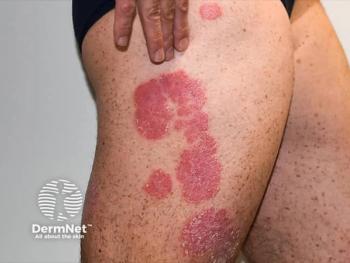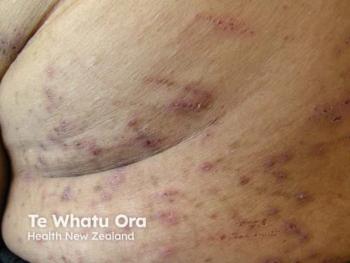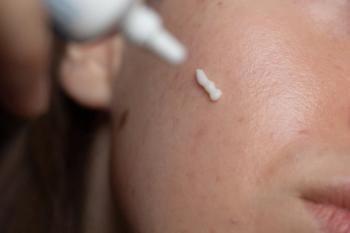
New Study Evaluates Accuracy of Hand Eczema Self-Assessments
Key Takeaways
- Self-reporting tools for hand eczema are gaining importance in large-scale and digital health contexts where clinical evaluations are impractical.
- The patient-HECSI shows promise as a reliable self-reporting tool, but its implementation faces practical challenges, including scalability and health literacy issues.
Explore the evolving landscape of self-reported hand eczema severity assessments, highlighting their potential and challenges in clinical research and digital health.
Recent research has brought renewed attention to the validity and applicability of patient self-reporting instruments for assessing hand eczema severity.1 While clinical assessment by dermatologists using validated tools—such as the Hand Eczema Severity Index (HECSI) and the Osnabrück Hand Eczema Severity Index (OHSI)—remains the methodological gold standard, self-reporting tools are gaining relevance in contexts where clinical evaluations are impractical.2-3 This includes large-scale epidemiological studies, remote research settings, and digital health applications, where direct clinician-patient interaction is limited or unavailable.
In this emerging field, researchers have systematically examined the correlation between various self-reporting instruments and established clinical scoring systems. These instruments vary considerably in format and complexity. Multi-item tools such as the photographic guide, the Patient-Oriented Eczema Measure (POEM) adapted for hand eczema, and the Hand Eczema Extent Score (HEES) aim to capture detailed aspects of disease severity. In contrast, single-item tools like visual analogue scales, verbal rating scales, and numerical rating scales provide a simpler and quicker method for patients to report symptoms.
Notably, recent studies have highlighted the patient-HECSI—a self-report adaptation of the clinician-administered HECSI—as a particularly promising tool. It has demonstrated strong correlation with clinician ratings, suggesting its potential as a reliable proxy measure. However, its implementation poses practical challenges. The validation process for patient-HECSI included a preparatory phase requiring written materials, visual aids, and a 7-minute instructional video. While this enhances accuracy, it may limit scalability, especially in populations with varying health literacy or limited access to digital resources.
Across other self-reporting instruments, correlation coefficients with gold-standard clinical assessments typically range from 0.4 to 0.6. These moderate correlations imply that while self-report tools may be unsuitable for individual treatment decisions, they can be sufficiently accurate for research purposes—particularly in longitudinal studies where repeated clinical evaluations are logistically difficult.
Despite growing interest, the field faces several methodological limitations. One major issue is the lack of standardization in validation studies. Different studies use varying gold standards—HECSI, OHSI, or the photographic guide—making direct comparisons of correlation coefficients difficult. As such, current findings do not support a clear recommendation for any single self-reporting tool as universally applicable. The choice of instrument must instead be tailored to the study’s context, objectives, and available resources.
Furthermore, the psychometric properties of many self-report tools, including test–retest reliability, responsiveness to change, and usability in digital formats, remain underexplored. Given the rapid integration of mobile technology and digital health platforms into clinical research, evaluating whether tools like the photographic guide can be effectively adapted for smartphone use is increasingly relevant. A color-printed A4 page with detailed photos, for example, may not translate effectively to a small mobile display without compromising validity.
Another area of interest identified in recent research is the discrepancy between patient-reported and clinician-assessed severity. Some patients report high symptom burden despite low clinical severity scores and vice versa. These "special cases" suggest a subjective dimension of disease experience that may not be captured through clinical observation alone. Quantitative and qualitative exploration of these mismatches could enrich understanding of patient experiences and lead to more nuanced care approaches.
In light of these findings, the Hand Eczema Core Outcome Set (HECOS) Initiative is an important step toward standardizing assessment in hand eczema research. Unlike atopic dermatitis, which benefits from harmonized tools such as EASI and POEM, hand eczema lacks a unified framework for outcome measurement. The ongoing consensus process aims to establish a core domain set and validated outcome instruments specific to hand eczema, accounting for its distinct clinical features and diverse etiologies, including atopic, irritant, allergic, and mixed types.
In conclusion, this recent body of research underscores the need for valid, reliable, and user-friendly self-reporting tools that align with the increasing shift toward decentralized and digital research models. While self-report instruments cannot yet replace clinician assessment in guiding treatment decisions, they offer meaningful value in large-scale and longitudinal studies. Future research should focus on refining these tools, validating their use in digital contexts, and understanding the patient perspective to ensure comprehensive, accessible, and scientifically robust approaches to hand eczema severity assessment.
References
- Wilke A, Rocholl M, Skudlik C, Nordheider K. Self-reported severity of hand eczema: Important outcome but how can we measure it?.Contact Dermatitis. Published online May 16, 2025. doi:10.1111/cod.14811
- Weistenhöfer W, Baumeister T, Drexler H, Kütting B. An overview of skin scores used for quantifying hand eczema: a critical update according to the criteria of evidence-based medicine. Br J Dermatol. 2010;162(2):239-250. doi:10.1111/j.1365-2133.2009.09463.x
- Dulon M, Skudlik C, Nübling M, John SM, Nienhaus A. Validity and responsiveness of the Osnabrück Hand Eczema Severity Index (OHSI): a methodological study. Br J Dermatol. 2009;160(1):137-142. doi:10.1111/j.1365-2133.2008.08870.x
Newsletter
Like what you’re reading? Subscribe to Dermatology Times for weekly updates on therapies, innovations, and real-world practice tips.


















